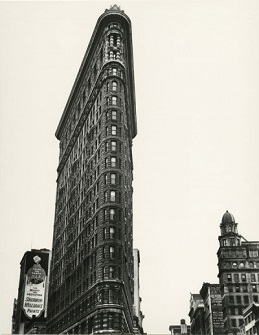The Charles Nègre Museum of Photography is the setting for the exhibition of photographs by Berenice Abbott, an American photographer born in 1898 in Springfield, Ohio, who passed away in Monson, Maine, in 1991. Thus, she witnessed the 20th century.
At the end of World War I, she settled in Greenwich Village and moved in an artistic and poetic community where she met Marcel Duchamp. In 1921, she found herself in Paris and quickly started working two years later as an assistant to Man Ray in Montparnasse.
In 1929, despite the economic crisis, she decided to return to the United States, settled in New York, and began her work on architecture and urban life. In Paris, Abbott was influenced by an elderly photographer, Eugène Atget, whose portrait she captured. Atget’s style was mainly documentary, which resonated with Berenice Abbott.
In 1926, she opened her own photography studio, where writers and artists came to have their portraits taken.
In 1929, upon returning to New York, she was struck by the city’s transformation and stayed to capture the changes and mutations, documenting a city embracing verticality with buildings defying the laws of balance. It is precisely this balance she seeks to portray. Her photos thus became documentaries of the city.
Like painters who go through several periods, Berenice Abbott experienced three: Portraits in Montparnasse, Documentaries on a city’s transformation, and finally Scientific Photography, with early prints from the 1940s.
After the war, she somewhat witnessed the space race against the backdrop of the Cold War between the United States and the USSR. While the Russians had a real advantage with Sputnik, the Americans caught up and surpassed them.
Berenice Abbott worked for the recognition of Eugène Atget (1857-1927) both in Europe and the United States.
The Charles Nègre Museum of Photography invites us to discover the black and white photos of Berenice Abbott until January 27, 2019. This exhibition is an opportunity to discover or rediscover analog photography and black and white.
Thierry Jan


